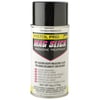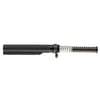Quick Tip: What You Need to Know About Recoil Springs
In this video, viewers receive concise and practical advice on the maintenance and replacement of recoil springs in firearms. Caleb discusses recommended replacement intervals—suggesting every 5,000 rounds for handgun recoil springs and every 10,000 rounds for AR-15 buffer springs—and highlights signs that indicate a spring may need replacement, such as sluggish cycling or operational inconsistencies.
What You Will Learn
The video educates viewers on the critical role recoil springs play in firearm functionality. It covers how to recognize when a recoil spring is worn out, the importance of regular maintenance, and the benefits of using dry-film lubricants over traditional oils to prevent dust accumulation and ensure smoother operation. Additionally, it introduces the advantages of chrome silicon springs for enhanced durability.
Benefit
By watching this video, firearm enthusiasts and owners will gain valuable insights into maintaining their weapons' reliability and performance. Understanding when and how to replace recoil springs can prevent malfunctions, enhance shooting accuracy, and extend the lifespan of the firearm. This knowledge is essential for anyone looking to ensure their firearm operates safely and efficiently.
Introduction
Hey everyone, Caleb from Brownells here! Today, we’re diving into a common question we get about recoil springs—should you go with chrome silicon or stainless steel?
A lot of people wonder which material is better, especially for AR-15 buffer springs and handgun recoil springs. So, I’m breaking it all down—material quality, longevity, corrosion resistance, and overall performance—to help you make the right choice. Let’s get started!
Chrome Silicon vs. Stainless Steel – What’s the Difference?
When looking at aftermarket recoil springs, you’ll usually find two main types:
- Stainless steel – Shiny silver in color, known for its corrosion resistance.
- Chrome silicon – Darker finish, sticks to magnets, and is known for its superior longevity.
Both types work well, but there are key differences in how they wear, perform, and hold up over time.
How to Visually Identify Each Type
If you’re not sure which type of spring you have, here’s a quick way to tell:
- Stainless steel springs are bright, shiny, and silver in color.
- Chrome silicon springs have a darker finish and are slightly less reflective.
- Chrome silicon will stick to a magnet, while stainless steel won’t.
Right away, you can spot the difference just by looking—but let’s get into what really matters: performance and durability.
Material Quality & Why It Matters
One of the biggest factors in choosing a recoil spring is material quality.
- Stainless steel is known for its rust and corrosion resistance, making it great for high-moisture environments.
- Chrome silicon is a higher-grade spring material designed for long-term durability.
However, not all springs are created equal. Cheap springs—whether stainless or chrome silicon—can fail quickly. That’s why buying from reputable manufacturers is important.
Corrosion Resistance vs. Spring Longevity
- If your gun is constantly exposed to moisture, a stainless steel recoil spring might make sense.
- If you want a longer-lasting spring that resists compression set, chrome silicon is the better choice.
Corrosion resistance is nice, but for most shooters, a gun should be properly maintained and dried off after exposure to moisture—so spring longevity often matters more than corrosion resistance.
Understanding Spring Set & Lifespan
When you install a recoil spring and start cycling your gun, it will experience spring set.
- Spring set is when a spring compresses slightly and shortens in length after repeated use.
- All recoil springs experience some set—but some materials hold up better than others.
- Chrome silicon springs take far less initial set than stainless steel springs.
That means chrome silicon retains its original shape longer, which leads to a longer-lasting and more consistent recoil cycle.
Comparing Wear Rates in Round Counts
Let’s put this in real-world numbers.
- A stainless steel recoil spring might wear out after 3,000 rounds.
- A chrome silicon spring under the same conditions might last 10,000 rounds or more.
That’s a huge difference in longevity. If you shoot regularly, chrome silicon will save you money in the long run because you won’t have to replace it as often.
Why Chrome Silicon Springs Last Longer
- They take less initial set, meaning they stay stronger longer.
- They maintain their spring rate better over thousands of cycles.
- They work well in both suppressed and unsuppressed setups.
For these reasons, chrome silicon has become my go-to choice for recoil springs and buffer springs.
Real-World Example: BRN-4 Setup
On my BRN-4 rifle, I run the BCM Mk2 recoil mitigation system, which uses a chrome silicon spring.
- This setup helps reduce recoil impulse while ensuring a consistent return-to-battery cycle.
- Since I don’t store my rifle in high-moisture environments, I don’t need to worry about corrosion resistance.
- The chrome silicon spring gives me better performance and longevity.
For a duty rifle or home-defense gun, longevity is key—so chrome silicon is the obvious choice.
When to Upgrade Your Recoil Spring
If you open up your rifle or handgun and see a stainless steel recoil spring, don’t panic. It’s fine—but if you’re replacing it anyway, consider switching to chrome silicon for longer lifespan and better performance.
Recommended Recoil Spring Replacement Intervals
- Handgun recoil springs – Every 5,000 rounds (or sooner if shooting high-pressure loads).
- AR-15 buffer springs – Every 10,000 rounds, depending on the setup.
- If your gun starts feeling sluggish, failing to cycle properly, or feels “off,” it might be time for a new spring.
Quick Maintenance Tips for Recoil Springs
- Wipe down your recoil spring regularly to remove dirt and grime.
- Do NOT oil your recoil spring—oil attracts dust and makes things sticky.
- Instead, use a dry-film lubricant for smoother operation without buildup.
Using Dry Film Lubricants for Springs
One of my favorite maintenance tricks is using a dry-film lubricant like Pistol Pro Mag Slick.
- Spray it lightly onto the spring.
- Let it dry (it dries almost instantly).
- Reinstall the spring into your firearm.
Dry-film lubricants help reduce friction and wear without attracting dust and grime.
Final Thoughts & Brownells Tech Line Info
- Chrome silicon lasts longer and resists compression set better.
- Stainless steel is more corrosion-resistant but wears out faster.
- If you're replacing your spring anyway, consider upgrading to chrome silicon.
- Regular maintenance and proper lubrication will help any spring last longer.
If you have questions about recoil springs, buffer springs, or firearm maintenance, drop a comment below or call the Brownells Tech Line.
Thanks for tuning in—see you next time.













